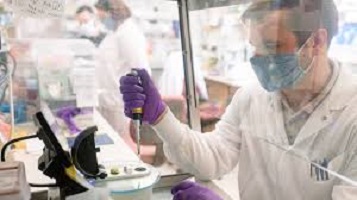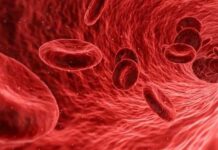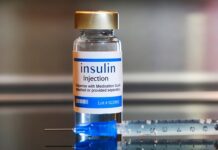RNA vaccines against Covid-19 have proven effective at reducing the severity of the disease. However, a team of researchers at MIT is working on making them even better. By tweaking the design of the vaccines, the researchers showed that they could generate COVID-19 RNA vaccines that produce a stronger immune response, at a lower dose, in mice.
Adjuvants are molecules commonly used to increase the immune response to vaccines, but they haven’t yet been used in RNA vaccines. In this study, the MIT researchers engineered both the nanoparticles used to deliver the Covid-19 antigen and the antigen itself, to boost the immune response, without the need for a separate adjuvant.
If further developed for use in humans, this type of RNA vaccine could help to reduce costs, reduce the dosage needed, and potentially lead to longer-lasting immunity. The researchers’ tests also showed that when delivered intranasally, the vaccine induced a strong immune response when compared to the response elicited by traditional, intramuscular vaccination.
“With intranasal vaccination, you might be able to kill Covid at the mucus membrane, before it gets into your body,” says Daniel Anderson, a professor in MIT’s Department of Chemical Engineering, a member of MIT’s Koch Institute for Integrative Cancer Research and Institute for Medical Engineering and Science (IMES), and the senior author of the study. “Intranasal vaccines may also be easier to administer to many people since they don’t require an injection.”
The researchers believe that the effectiveness of other types of RNA vaccines that are now in development, including vaccines for cancer, could be improved by incorporating similar immune-stimulating properties.
Former MIT postdoc Bowen Li, who is now an assistant professor at the University of Toronto; graduate student Allen Jiang; and former MIT postdoc Idris Raji, who was a research fellow at Boston Children’s Hospital, are the lead authors of the new study, which appears today in Nature Biomedical Engineering. The research team also includes Robert Langer, the David H. Koch Institute Professor at MIT and a member of the Koch Institute, and several other MIT researchers.
Boosting immunity
RNA vaccines consist of a strand of RNA that encodes a viral or bacterial protein, also called an antigen. In the case of Covid-19 vaccines, this RNA codes for a segment of the virus’s spike protein. That RNA strand is packaged in a lipid nanoparticle carrier, which protects the RNA from being broken down in the body and helps it get into cells.
Once delivered into cells, the RNA is translated into proteins that the immune system can detect, generating antibodies and T cells that will recognize the protein if the person later becomes infected with the SARS-CoV-2 virus.
The original Covid-19 RNA vaccines developed by Moderna and Pfizer/BioNTech provoked strong immune responses, but the MIT team wanted to see if they could make them more effective by engineering them to have immune stimulatory properties.
In this study, the researchers employed two different strategies to boost the immune response. For the first, they focused on a protein called C3d, which is part of an arm of the immune response known as the complement system. This set of proteins helps the body fight off infection, and C3d’s role is to bind to antigens and amplify the antibody response to those antigens. For many years, scientists have been evaluating the use of C3d as a molecular adjuvant for vaccines made from proteins, such as the DPT vaccine.
“With the promise of mRNA technologies being realized with the Covid vaccines, we thought that this would be a fantastic opportunity to see if C3d might also be able to play a role as an adjuvant in mRNA vaccine systems,” Jiang says.
To that end, the researchers engineered the mRNA to encode the C3d protein fused to the antigen, so that both components are produced as one protein by cells that receive the vaccine.
In the second phase of their strategy, the researchers modified the lipid nanoparticles used to deliver the RNA vaccine, so that in addition to helping with RNA delivery, the lipids also intrinsically stimulate a stronger immune response.
To identify lipids that would work best, the researchers created a library of 480 lipid nanoparticles with different types of chemistries. All of these are “ionizable” lipids, which become positively charged when they enter acidic environments. The original Covid RNA vaccines also included some ionizable lipids because they help the nanoparticles to self-assemble with RNA and they help target cells to take up the vaccine.
“We understood that nanoparticles themselves could be immunostimulatory, but we weren’t quite sure what the chemistry was that was needed to optimize that response. So instead of trying to make the perfect one, we made a library and evaluated them, and through that, we identified some chemistries that seemed to improve their response,” Anderson says.
Toward intranasal vaccines
The researchers tested their new vaccine, which included both RNA-encoded C3d and a top-performing ionizable lipid identified from their library screen, in mice. They found that mice injected with this vaccine produced 10 times more antibodies than mice given unadjuvanted COVID RNA vaccines. The new vaccine also provoked a stronger response among T cells, which play important roles in combating the SARS-CoV-2 virus.
“For the first time, we’ve demonstrated a synergistic boost in immune responses by engineering both the RNA and its delivery vehicles,” Li says. “This prompted us to investigate the feasibility of administering this new RNA vaccine platform intranasally, considering the challenges presented by the mucociliary blanket barrier in the upper airways.”
When the researchers delivered the vaccine intranasally, they observed a similarly strong immune response in the mice. If developed for use in people, an intranasal vaccine could potentially offer enhanced protection against infection because it would generate an immune response within the mucosal tissues that line the nasal passages and lungs.
Because self-adjuvanting vaccines elicit a stronger response at a lower dose, this approach could also help to reduce the cost of vaccine doses, which might allow them to reach more people, especially in developing nations, the researchers say.
Anderson’s lab is now exploring whether this self-adjuvanting platform might also help boost the immune response of other types of RNA vaccines, including cancer vaccines. Working with healthcare companies, the researchers also plan to test the effectiveness and safety of these new vaccine formulations in larger animal models, in hopes of eventually testing them on patients.
The research was funded by the National Institutes of Health and Translate Bio.



























